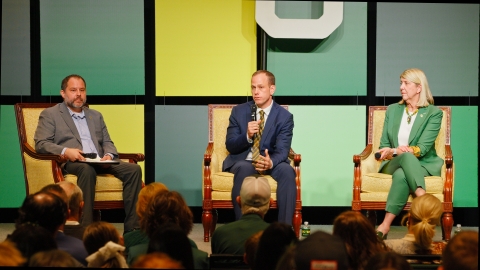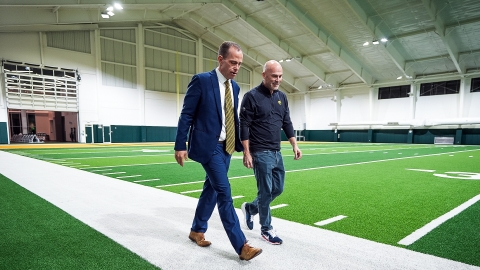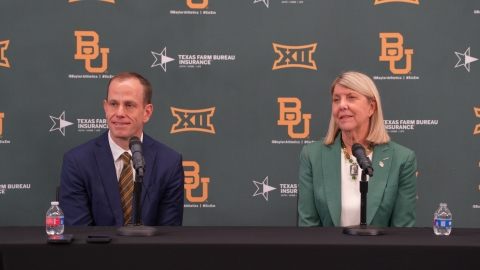Falling Off the Bubble: How Baylor’s Offensive Struggles Undid a Promising Season
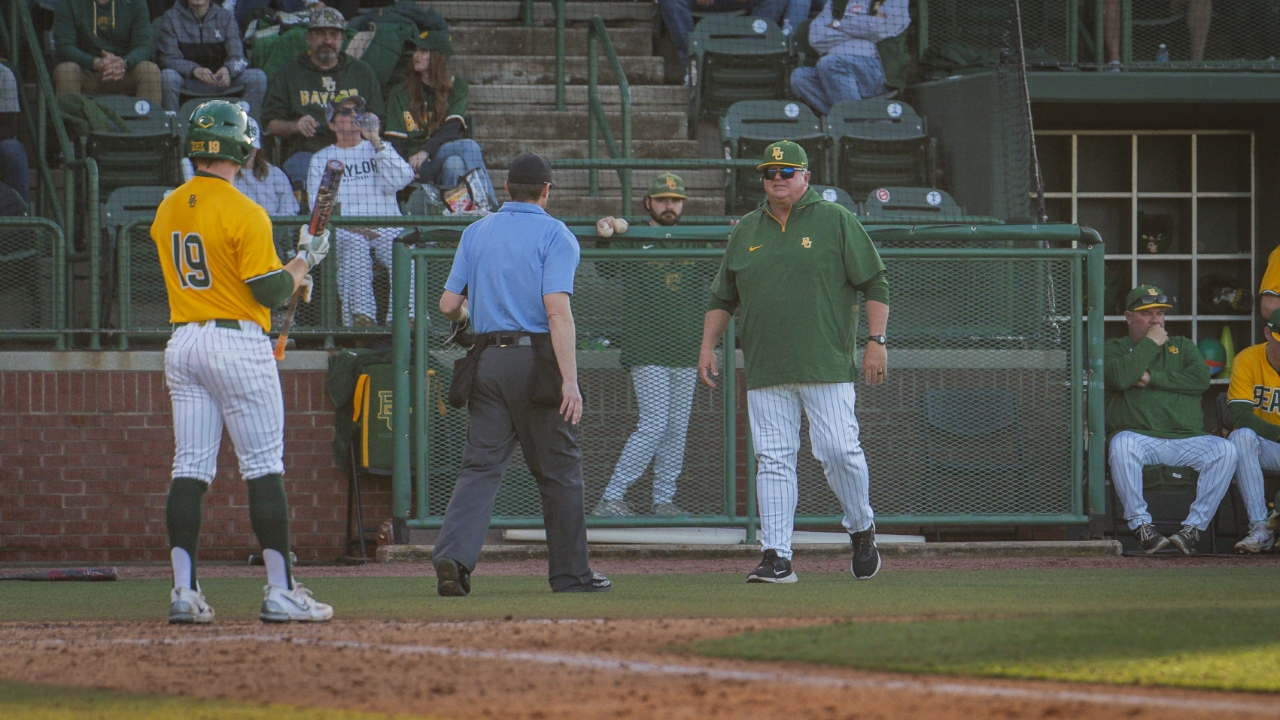
Download the SicEm365 app on the Apple App Store
After losing six of its last nine conference games, Baylor has been eliminated from the NCAA Tournament, barring an unforeseen run in the Big 12 Tournament next week at Globe Life Field in Arlington.
Even then, the “magic number” for the Bears to clinch a conference tournament berth for the first time since 2022 is one. Baylor (31-20, 11-16) needs to win one game against UCF (27-24, 8-19) this weekend or hope BYU (24-25, 8-19) loses a game to Texas Tech.
Obviously, it’s extremely disappointing to go from potential tournament talks where Baylor was featured in mid-season brackets by D1Baseball and Baseball America to falling off the bubble and aiming just to make the conference tournament in a matter of a month.
Those things will be reviewed at length when the offseason arrives, but until then, let’s discuss what’s plagued the Bears in recent weeks during this rough stretch to close the year.
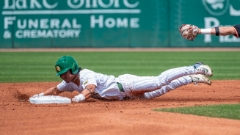
Sunday’s walk-off win against Oklahoma State was one of the few games in recent weeks where the pitching, the defense and the offense all clicked together. In fact, it was also just the second game in conference play where Enzo Apodaca (RSr.), Wesley Jordan (Sr.) and Ty Johnson (Sr.) each recorded multi-hit performances in the same contest.
The root cause of Baylor’s struggles, particularly throughout Big 12 play, has been the lineup's failure to live up to expectations. With little pop throughout the batting order, the Bears have had to rely on piecing together hits to score most of their runs, but have been abysmal in situational hitting for much of the latter half of the year.
Since April 4, when Baylor held a 20-8 record and was coming off a road series win over No. 23 Arizona, the Bears are hitting .235 (69-for-293) with runners on and .220 (48-for-218) with runners in scoring position during conference play. In that span, Baylor has gone 7-11 in Big 12 play, and its RPI has fallen from 34 to 75.
Across the last six series, the Bears have failed to score more than 15 runs on the weekend five times and were shut out for the first time all season on Saturday against Oklahoma State, 4-0, one day after a 7-2 defeat in the series opener.
Head coach Mitch Thompson was annoyed by the offense’s performance after Saturday’s loss, saying, “It’s incredibly frustrating. I’m frustrated. I think the hitters are frustrated. Again, we didn’t make enough adjustments. We have to do something differently. You can’t just keep rolling through inning after inning without making an adjustment. I give their guy credit. He kept rolling up ground balls, and they kept making plays for him; it was a pretty easy day for them.”
Baylor’s two best players this season have been the middle infield duo of Tyriq Kemp (Sr.) and Travis Sanders (RSo.). Kemp was in the nine-hole to start the spring, and Sanders didn’t take over the everyday role at second base until March 9.
Kemp leads the team in batting average (.358), on-base percentage (.446) and has drawn more walks (30) than strikeouts (27). He’s seventh in the Big 12 in batting average during conference play (.382), while being in national contention for a Gold Glove defensively.
Sanders has had a rough go of things in May and is 5-for-30 at the plate across his last seven games with 16 punchouts, but is still second on the team in batting average (.342) and on-base percentage (.429).
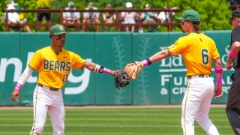
Third baseman Pearson Riebock (Fr.) has also been a pleasant surprise this spring; he’s tied for third on the team in overall batting average (.311) and on-base percentage (.417), as well as batting average (.291) and on-base percentage (.383) in conference play.
Outside of that, the four seniors — Apodaca, Jordan, Johnson and Hunter Simmons (RSr.) — who were supposed to anchor the offense, haven’t necessarily lived up to expectations. That isn’t to say they’ve had bad seasons, by any means, but this just hasn’t been the year any of them probably envisioned.
Simmons's power never returned post-injury, and while he was having a solid season and is still hitting .311, he’s really struggled as of late, going 4-for-40 in his last 11 games. With 57 total strikeouts, he’s on pace to break the program record in punchouts set by Jared McKenzie in 2022 with 64.
Apodaca, Jordan and Johnson will all finish with batting averages and on-base percentages below their 2024 mark. The outfield trio combined to hit .325 last year while totaling 274 bases; they are currently hitting .287 with a .266 average in Big 12 play.
Jordan leads the team in RBIs (38), and Apodaca leads the team in runs (54). Both are still playing well and have turned it on lately, but neither took the leap forward that was expected of them in their senior seasons.
Another disappointment offensively has been the play at first base, which has been a revolving door over the last month between Jack Little (RSo.), John Youens (RFr.), Will Pendergrass (RSr.) and Gavin Brzozowski (RSo.).
Little was a player that the coaching staff had very high expectations for this season and got the most opportunities out of the group, but is hitting .224 across 40 starts with 55 strikeouts in 152 at-bats.
In most contests throughout the last few weeks, the pitching staff has done enough to keep the Bears in the ballgame. While the starting rotation hasn’t had the type of consistency you might like on a weekly basis, the bullpen has been fantastic under first-year pitching coach Sean Snedeker.
Compared to last year, Baylor's earned run average has dropped from 6.51 to 4.52, and its free passes allowed have nearly been cut in half from 340 to 205. WHIP and batting average against went from 1.69 and .284 in 2024 to 1.33 and .248 this spring, respectively.
The Bears went from being at the bottom of the Big 12 in nearly every single pitching category in 2024 to the middle of the pack in just one offseason. In ERA (5.67) during conference play, Baylor is sixth in the Big 12 and has the fifth-lowest batting average against (.270).

Entering the 2025 season, the Bears only had one proven arm on their roster with Power Five production: left-handed pitcher Ethan Calder (Jr.). Even in Calder’s case, he went from being an All-Big 12 reliever to a member of the weekend rotation, which is a huge difference.
Considering the unknowns that Snedeker was working with, he exceeded expectations with this group, getting an All-American-caliber season from closer Gabe Craig (RSr.), who has a team-low 0.61 ERA and a remarkable 46-to-3 strikeout-to-walk ratio across 29.1 frames.
Other relievers who have had great seasons include Will Glatch (Sr.), Grayson Murry (Jr.), Caleb Bunch (Sr.) and Lucas Davenport (RSo.), all of whom have remaining eligibility. Other players who took significant steps as the year went on were lefties Mason Green (So.) and Caleb Jameson (RSo.).
The six pitchers mentioned above have a combined 2.58 ERA across 157 innings and a 137-to-52 strikeout-to-walk ratio. The pitching staff has a bright future ahead, and I’d contend the struggles from this spring ultimately fall at the feet of the offense.
The key difference with this season is a bad roster, and injuries can no longer excuse poor play. The Bears had the pieces this spring to be much better than they were. That’s not to say Baylor would have been a legitimate Big 12 title contender, but they had enough talent to win around 35 games, go .500 in conference play and be on the right side of the bubble in late May.
The frustrations of not living up to the team's potential should make for an interesting offseason in the weeks ahead. But until then, the Bears should have one final chance to put it all together next week in Arlington.
More Baseball Reading:
- From Struggles to Success: Tyriq Kemp's Journey to Refind His Signature Spark
- The Power of Belief: Will Glatch's Path from Setbacks to Standout Reliever
- Faith, Injury and Hope: The Resilient Return of Hunter Simmons
